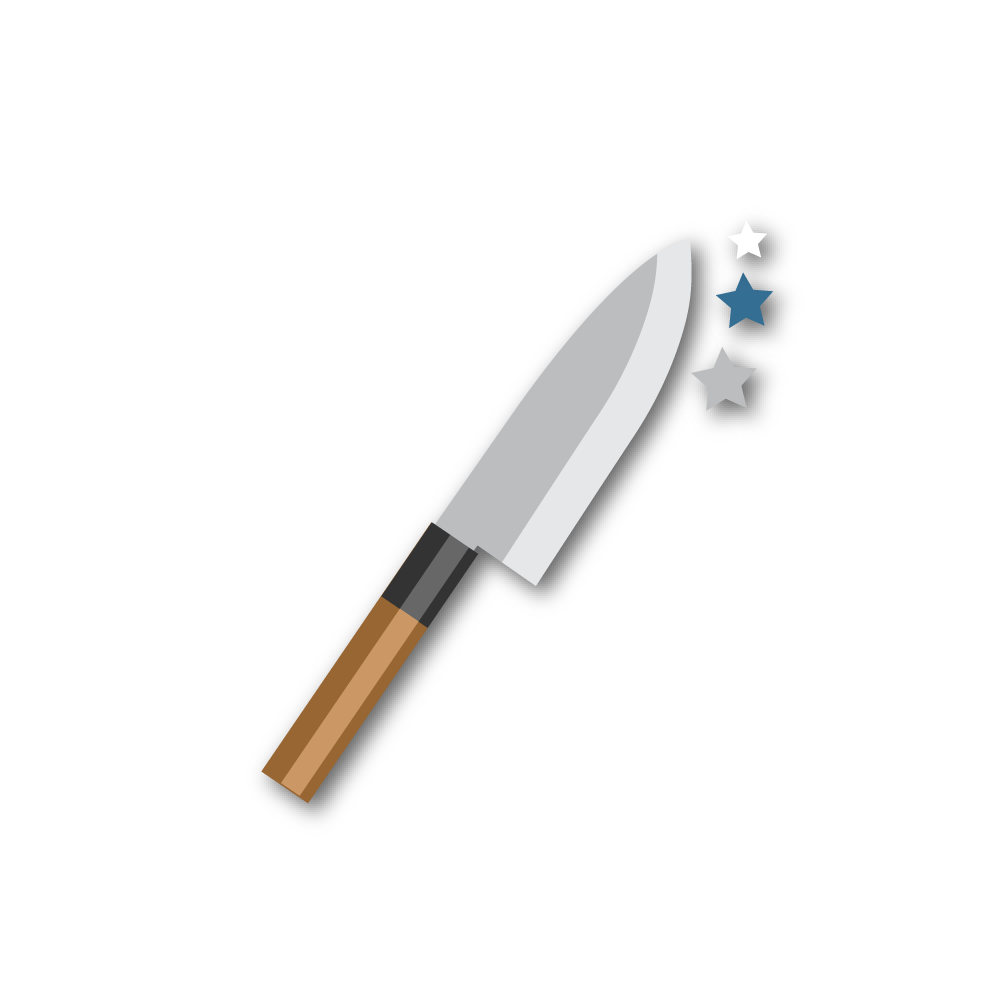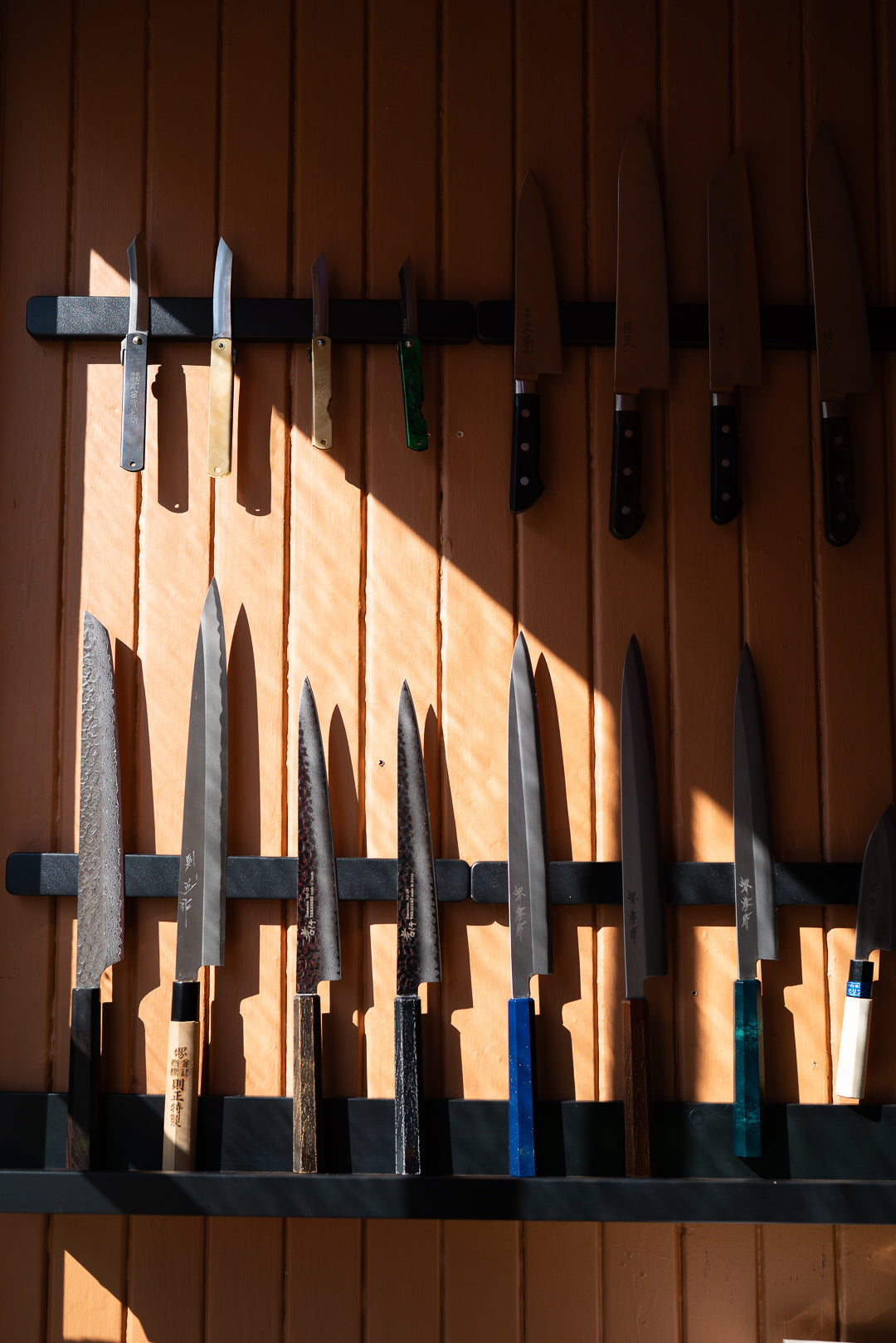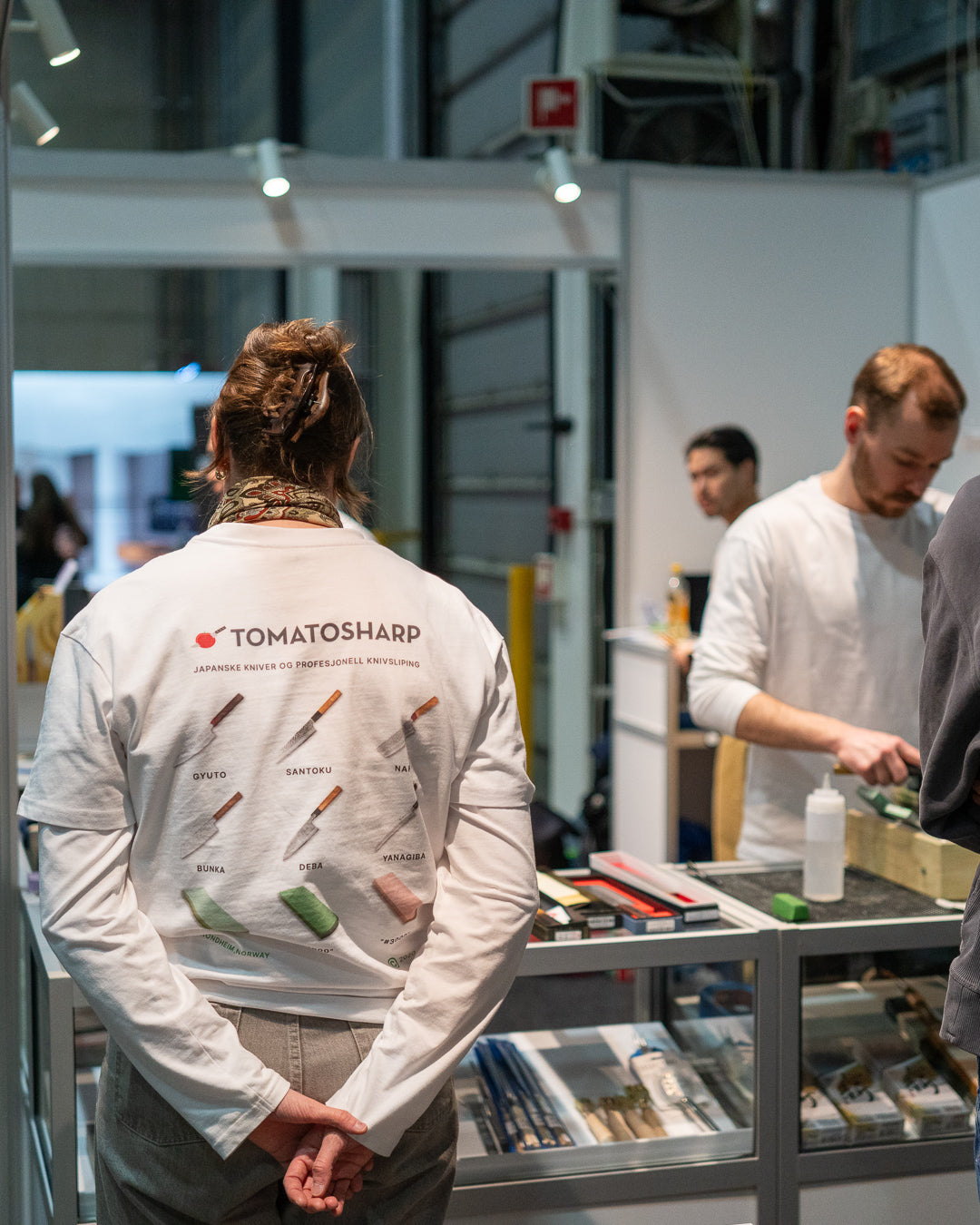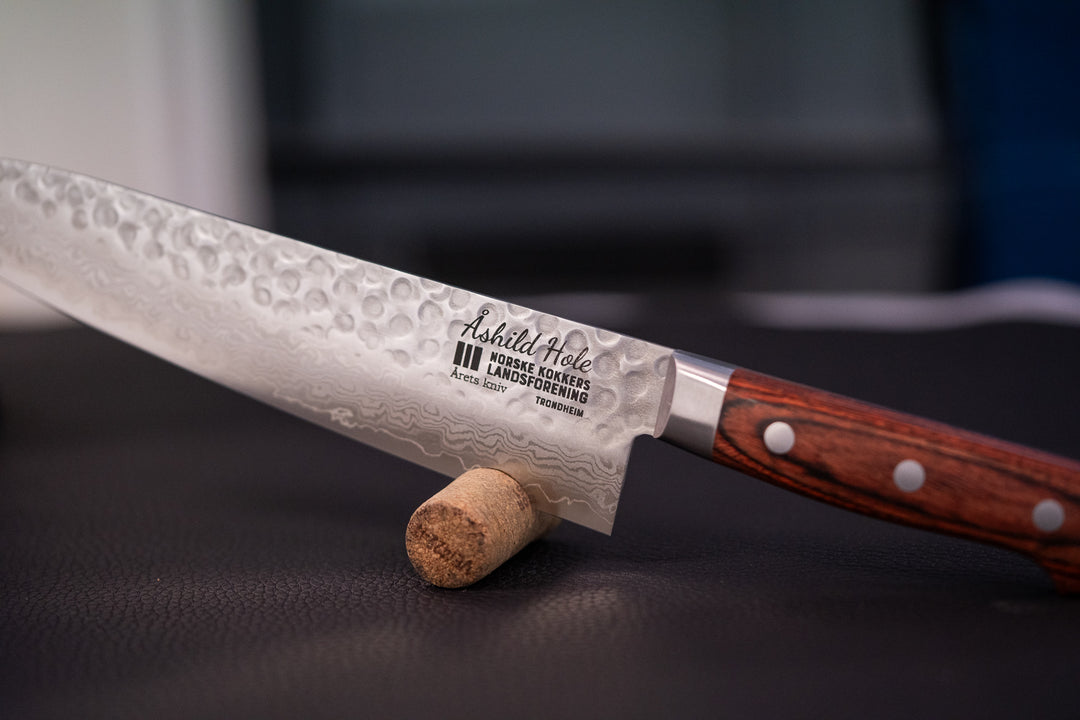TAKEO MURATA Buho Kurouchi Ko-bocho 120 mm
- In stock, ready to ship
- Backordered, shipping soon
Shop nå. Betal med Klarna.

- Levering 1-3 virkedager
- Fri frakt over 1000kr
- 30 dagers åpent kjøp
| Knivtype | Santoku |
| Bladlengde | 120 mm |
| Høyre-/venstrehendt | For both |
| Slipefase | 50/50 |
| Håndtak | Magnolia |
| Hardhet | 63-64 HRC |
| Ståltype | Karbonstål |
| Stål | Blue #1 (Aogami #1) |
A Ko-bocho is a cross between a small santoku and a Petty. A ko-bocho is ideal when you are working with intricate ingredients such as vegetables and other ingredients that need to be held in your hand while you work.
Kurouchi means raw or unsharpened in Japanese, and refers to the unfinished surface of the blade. This surface retains the dark, hammered texture and rust-colored appearance typical of kurouchi.
Kurouchi is more than just an aesthetic feature on the knife, and has a functional role by reducing friction between food and knife, making it easier to cut through various ingredients.
Santoku er den perfekte allroundkniven innenfor japanske kokkekniver, og navnet oversettes til tre bruksområder. Disse tre bruksområdene er kjøtt, fisk og grønnsaker, og den kan med andre ord brukes til det aller meste på kjøkkenet.
Bladet til en santoku er litt bredere enn en gyuto eller en vestlig kokkekniv, og gir derfor god plass til f.eks. større grønnsaker med litt høyde. Den har en karakteristisk tupp som gir eggen en større kontaktflate. Dette gjør at man kan kutte effektivt med en teknikk som kalles "push cut".
Et karbonstål med tilsetning av krom og wolfram, som gir økt slitestyrke og hardhet. Beholder skarpheten lenger enn mange andre ståltyper. Rengjør og tørk umiddelbart etter bruk; unngå langvarig eksponering for fuktighet. Over tid vil stålet utvikle en beskyttende patina som forbedrer rustmotstanden og gir bladet karakter.
Bruk
Japanske kniver er vanligvis tynnere og mer delikate enn vestlige kniver, så de er ikke egnet for å kutte gjennom bein, frosne matvarer eller harde gjenstander. Bruk et mykere skjærebrett laget av tre, plast eller gummi og skjær med en rullende bevegelse i stedet for å presse ned med kraft.
Vask og oppbevaring
Vask kniven for hånd med mild såpe og varmt vann umiddelbart etter bruk. Tørk kniven med en myk klut eller et kjøkkenhåndkle for å forhindre rust. Oppbevar kniven på en sikker og tørr plass når den ikke er i bruk. Bruk gjerne en knivblokk, magnetisk knivholder eller knivslirer for å forhindre skader på eggen. Les mer
Vedlikehold
Vi anbefaler å bruke en keramisk brynestav i kombinasjon med en lærstropp for å vedlikeholde / skjerpe eggen. Dette gjør at kniven holder seg skarp mye lenger før den må slipes på stein. Ved sliping anbefaler vi våtslipesteiner for å få best resultat, samtidig som at man fjerner minimalt med materiale.

























